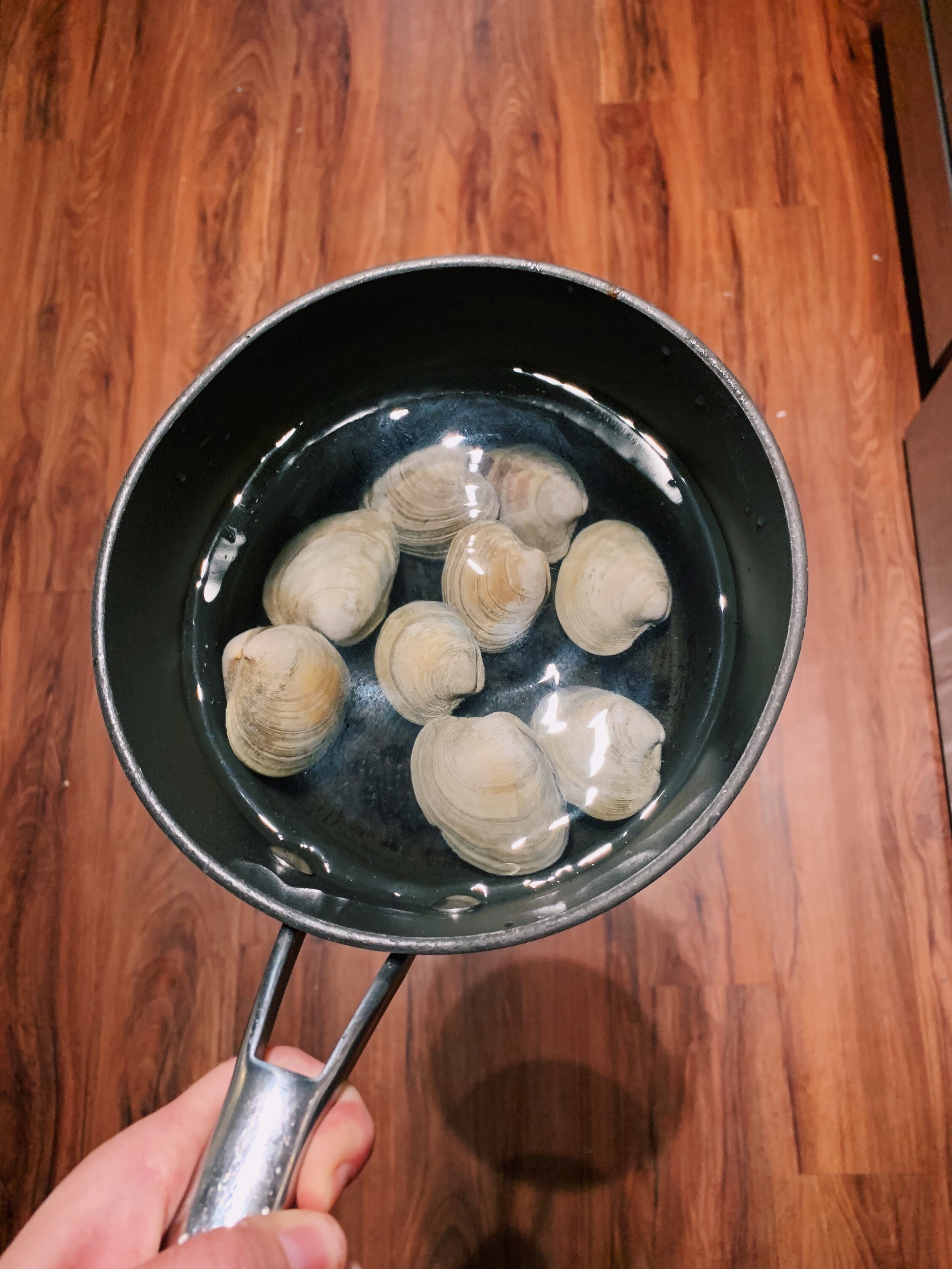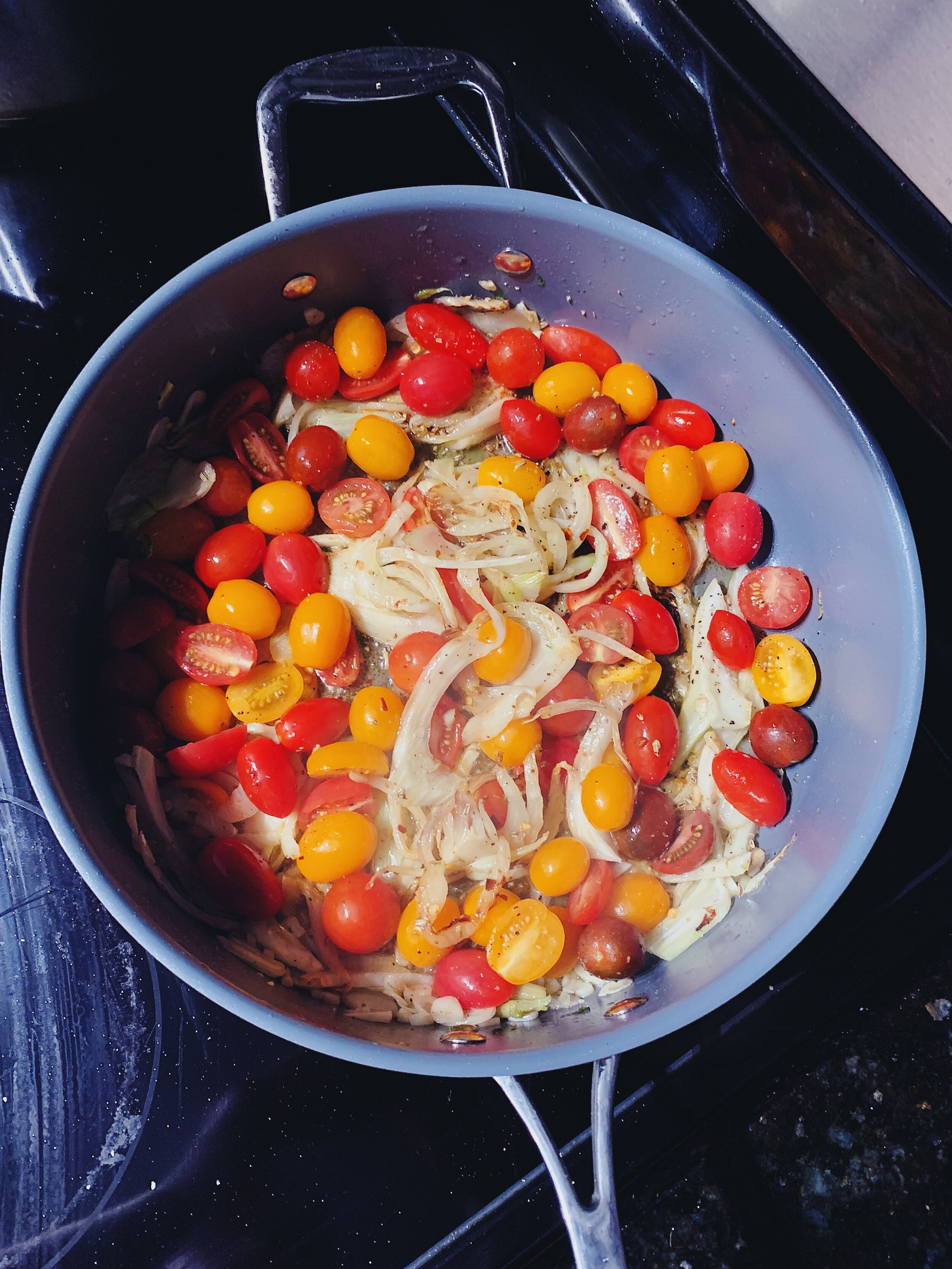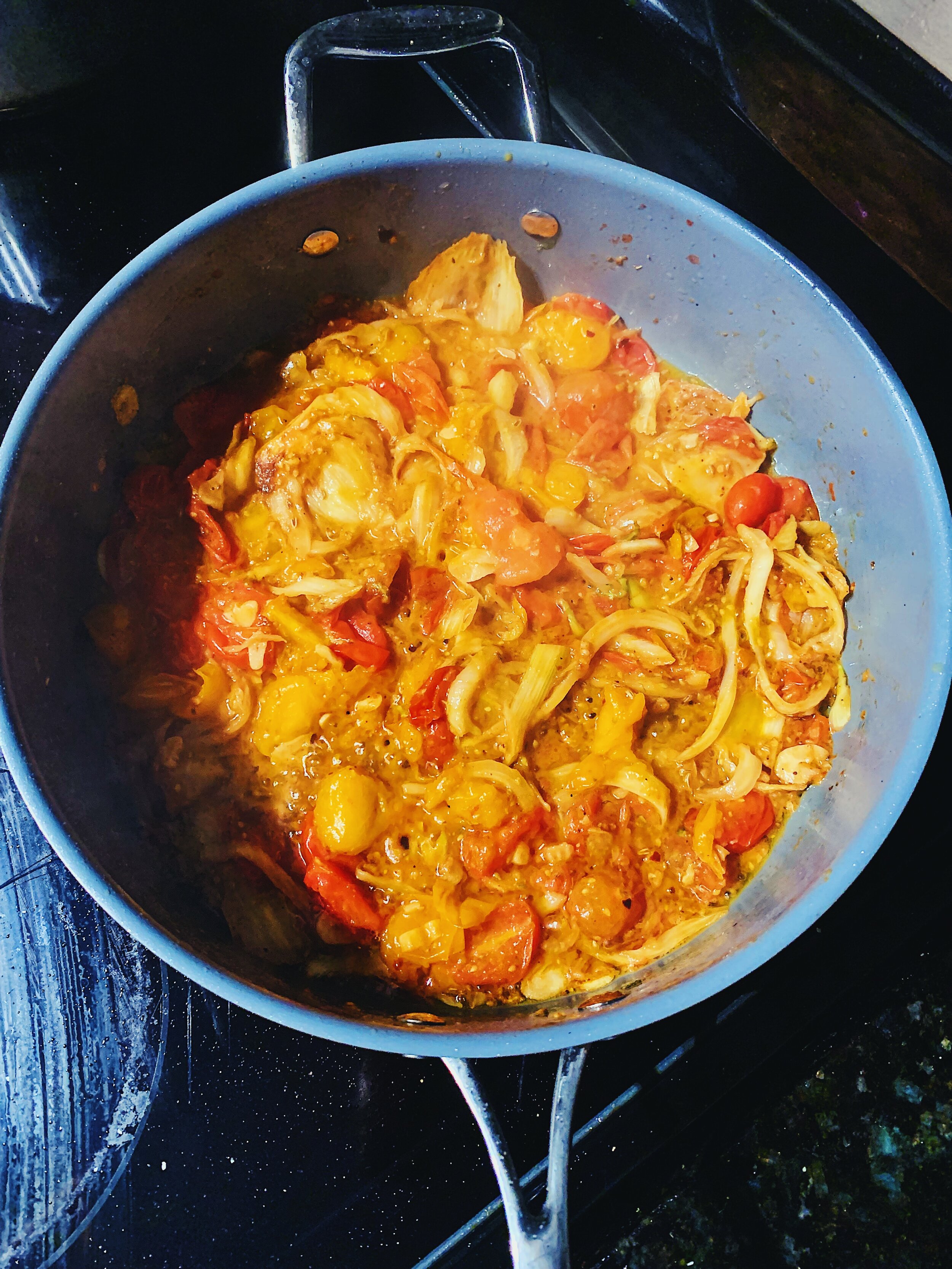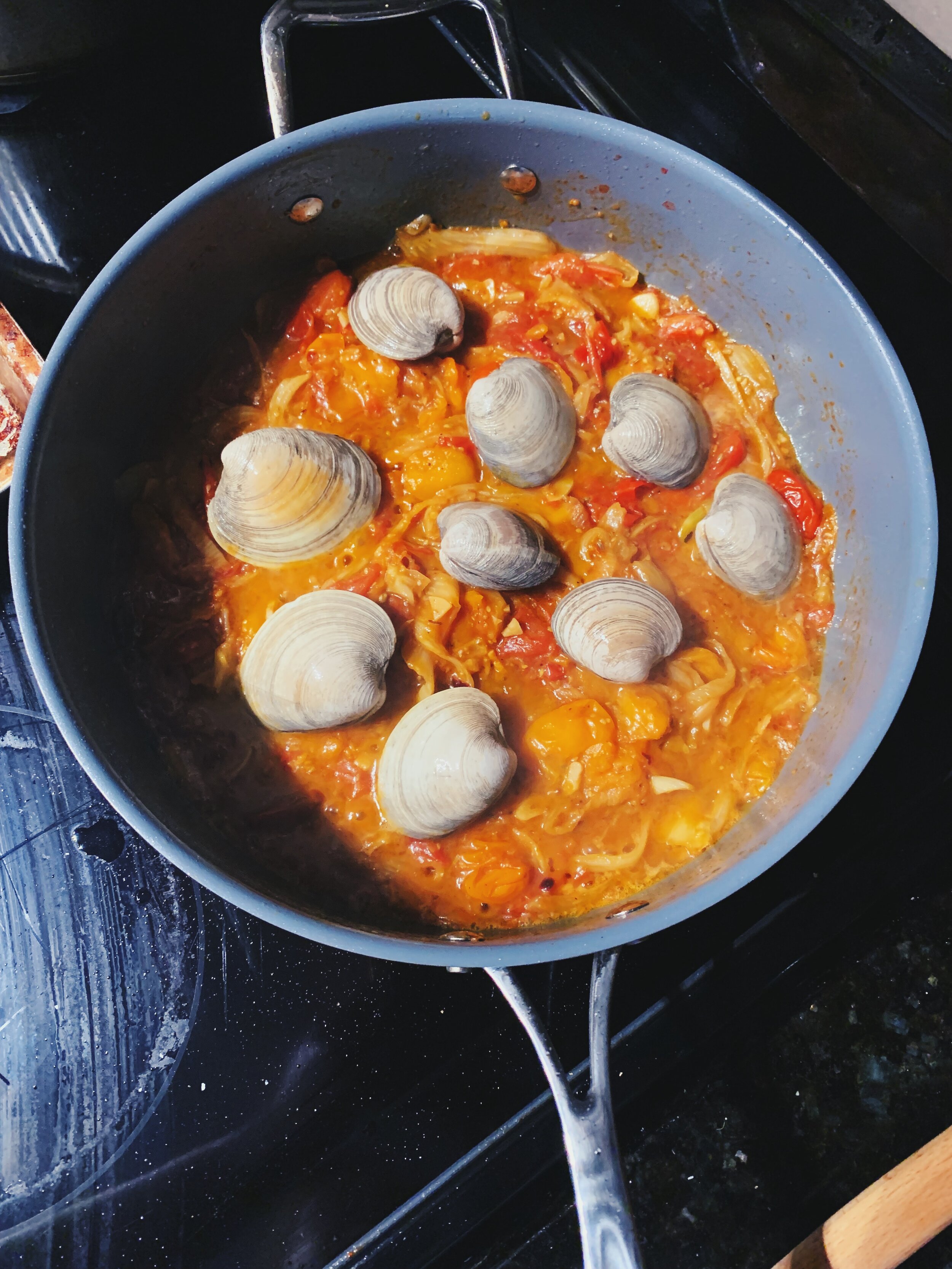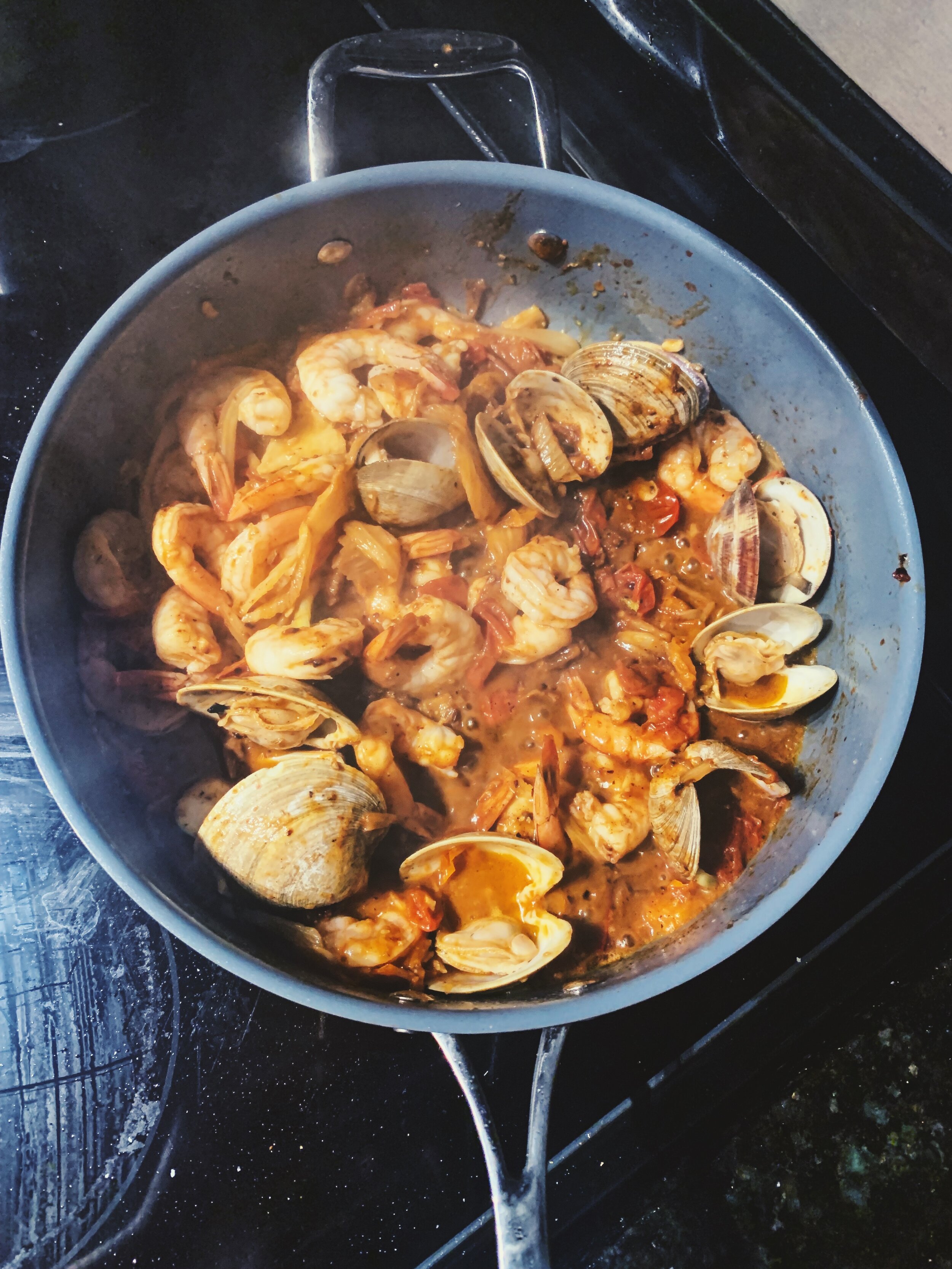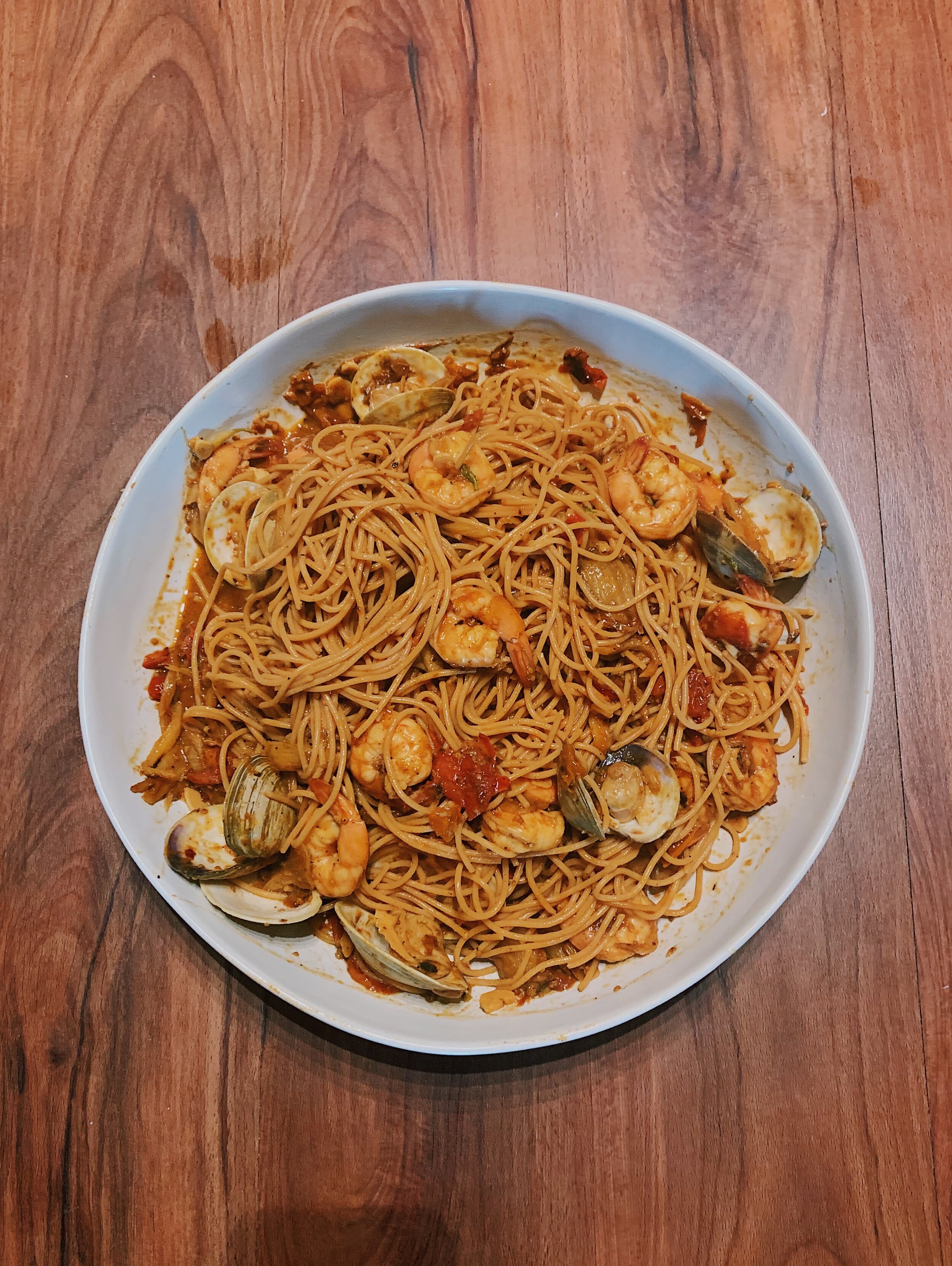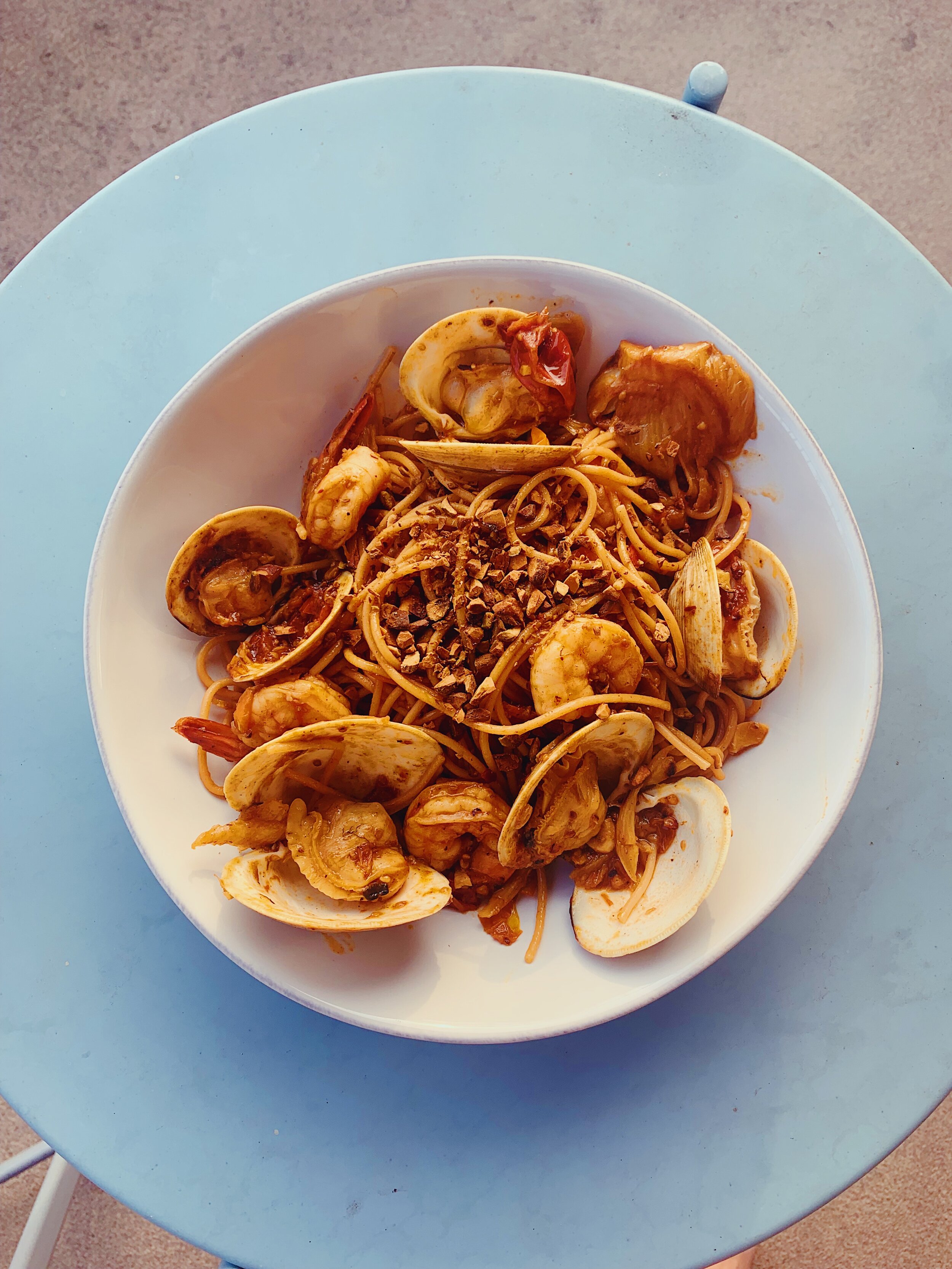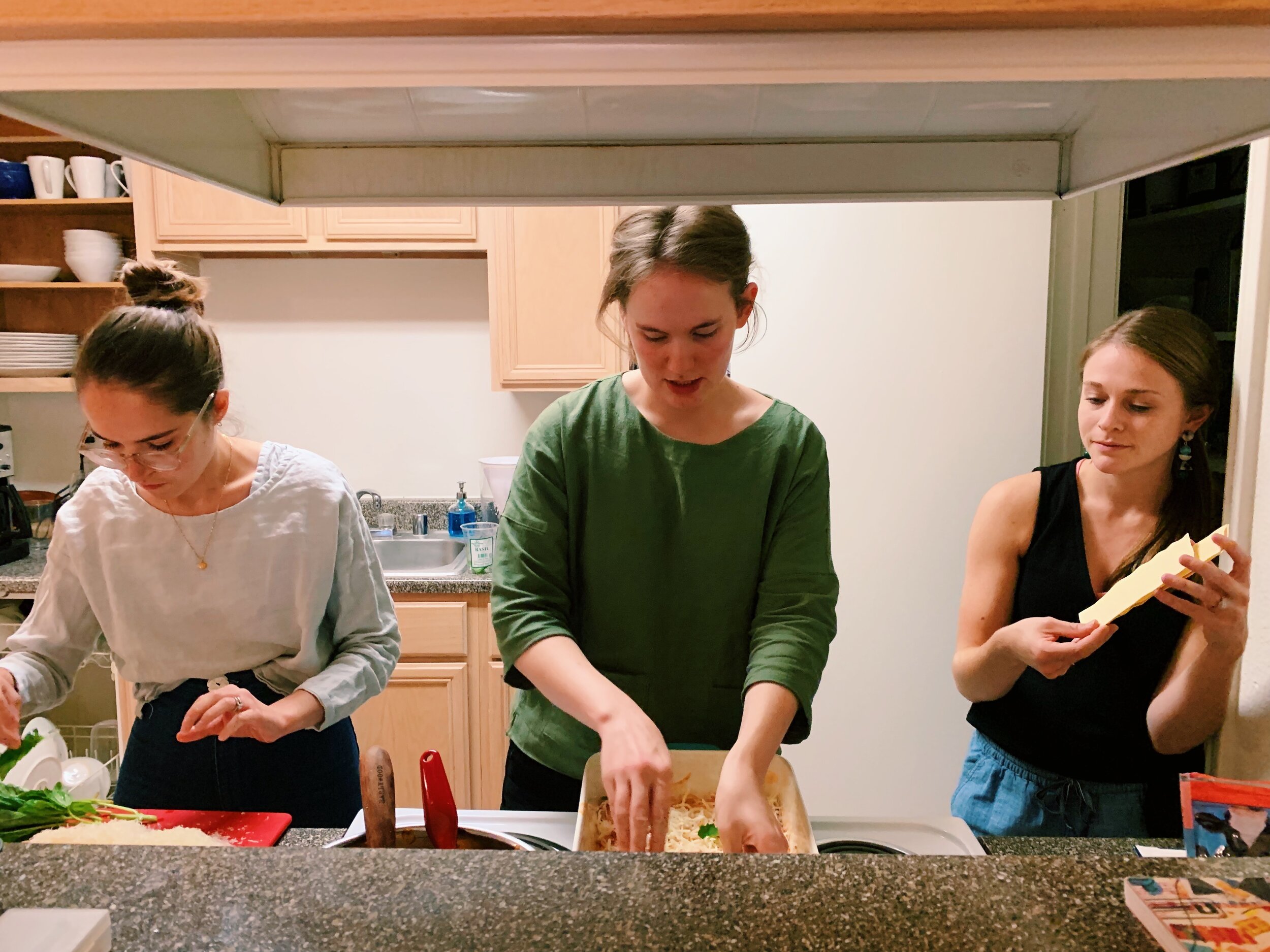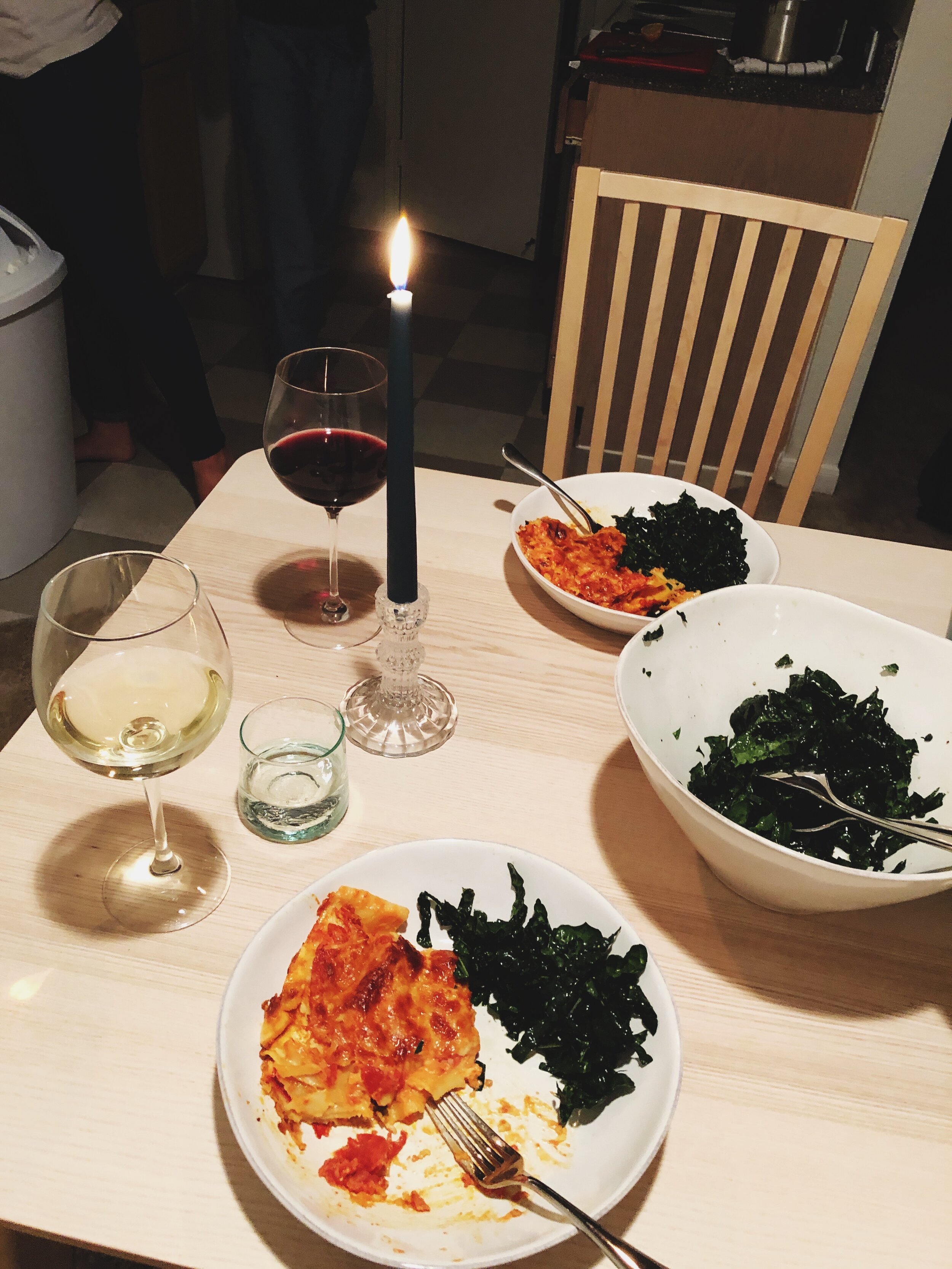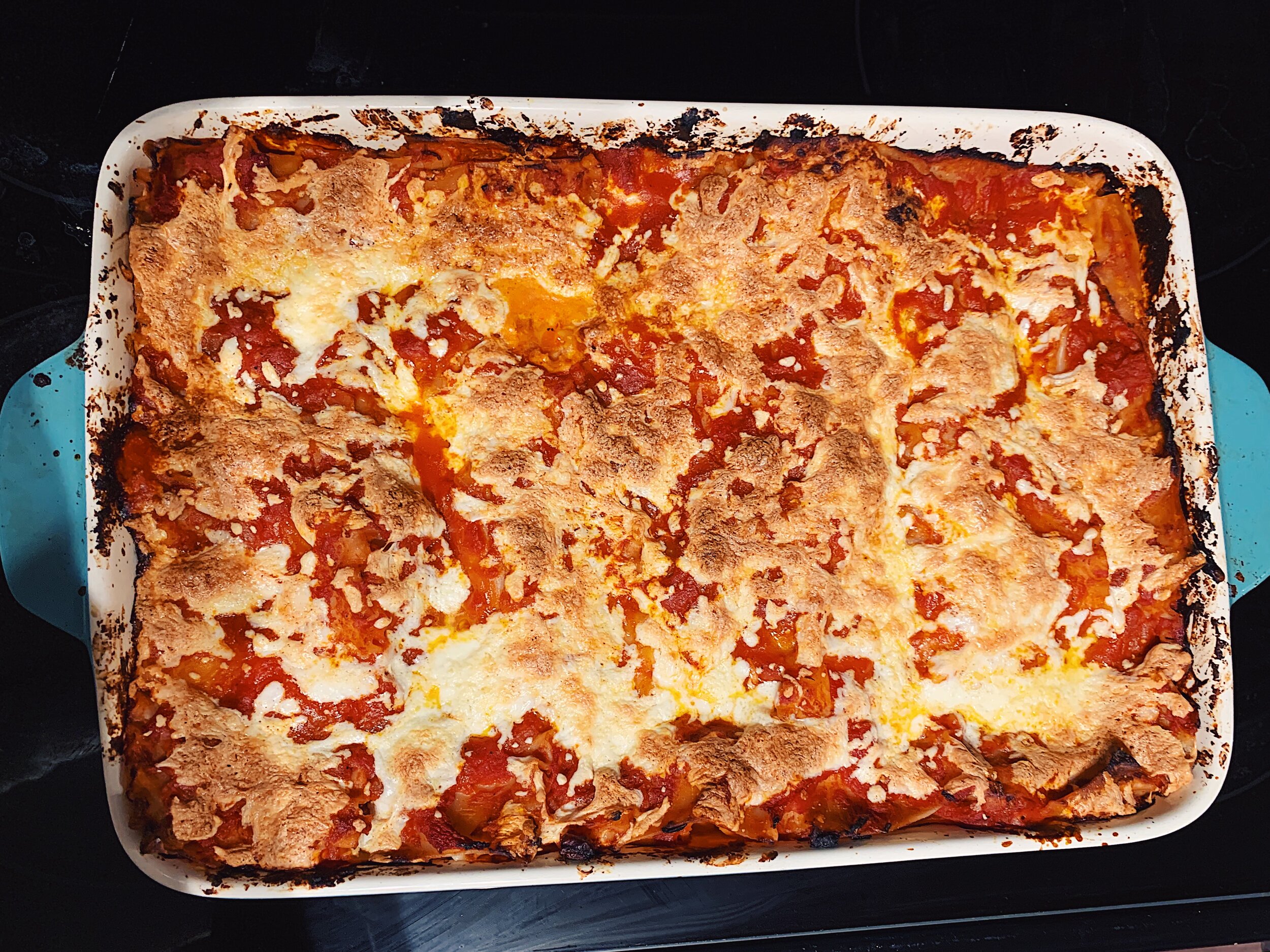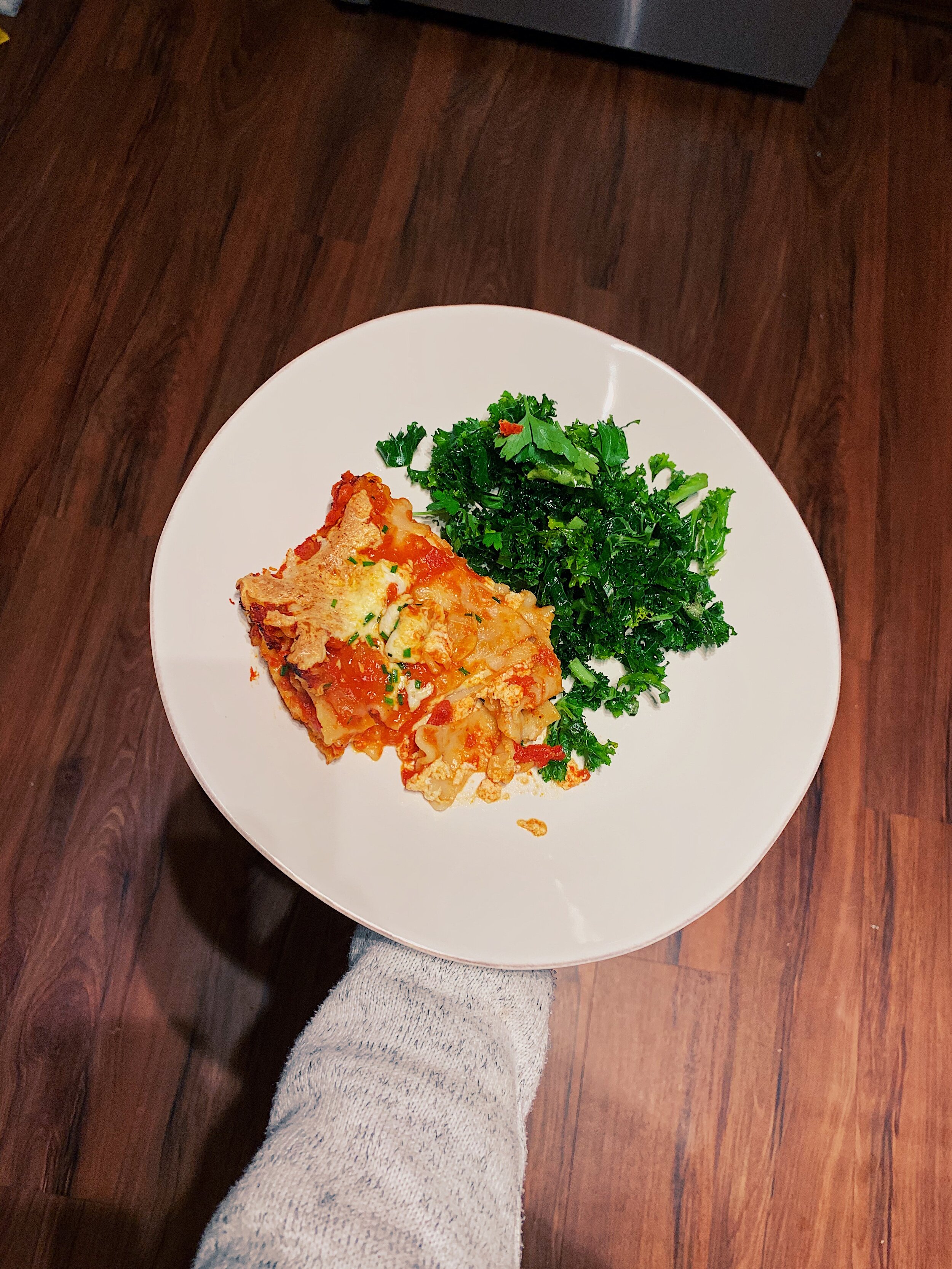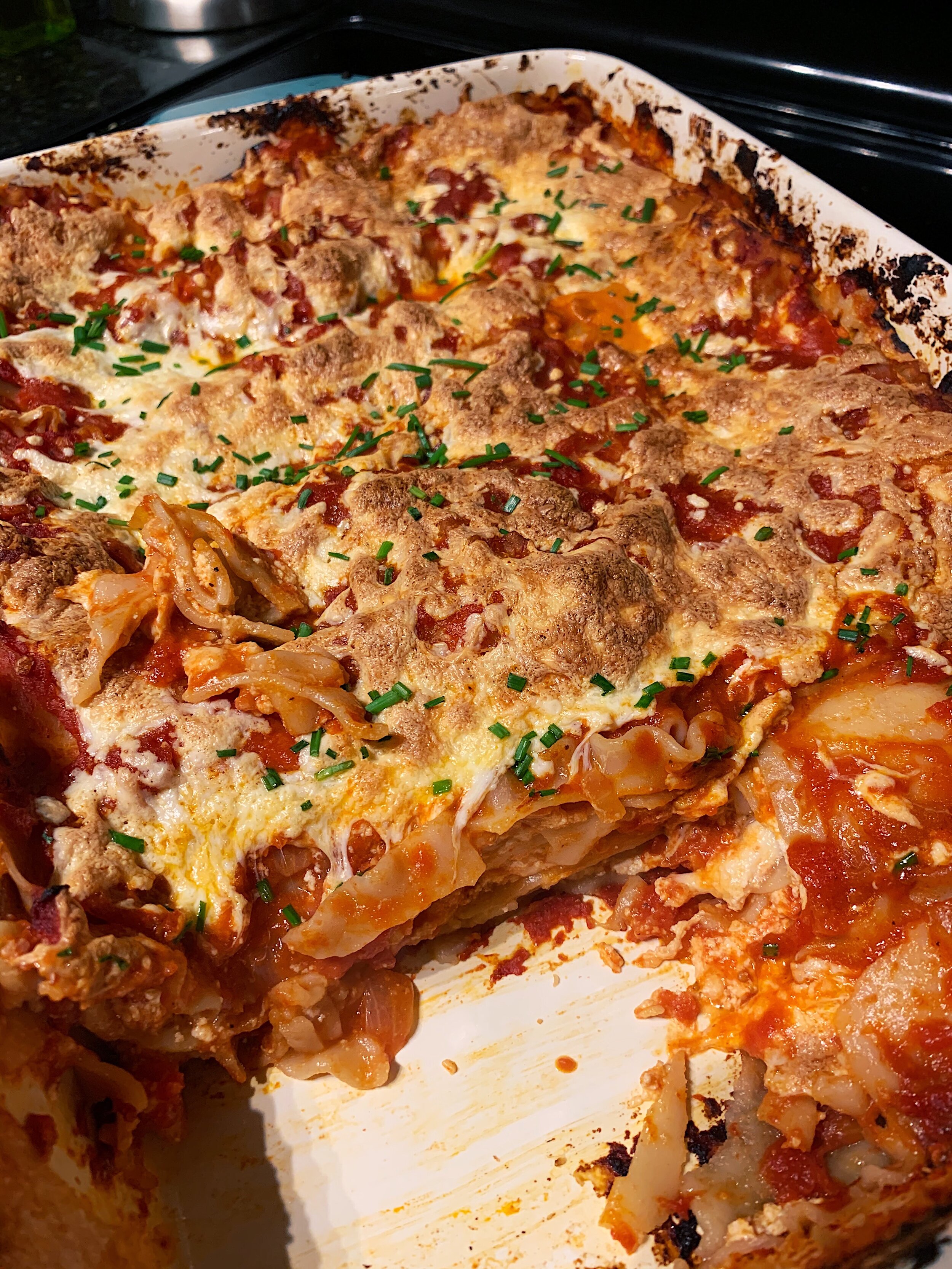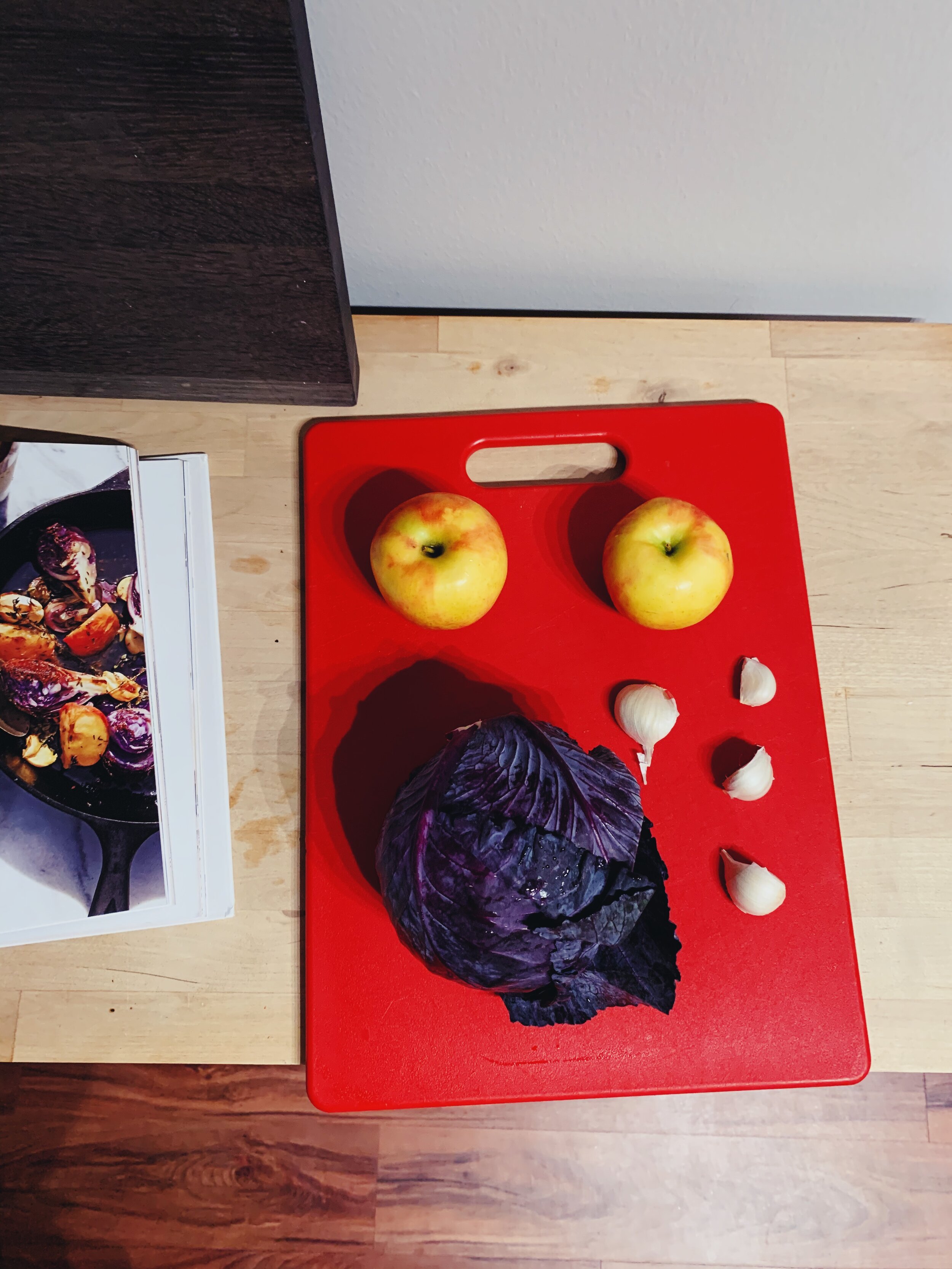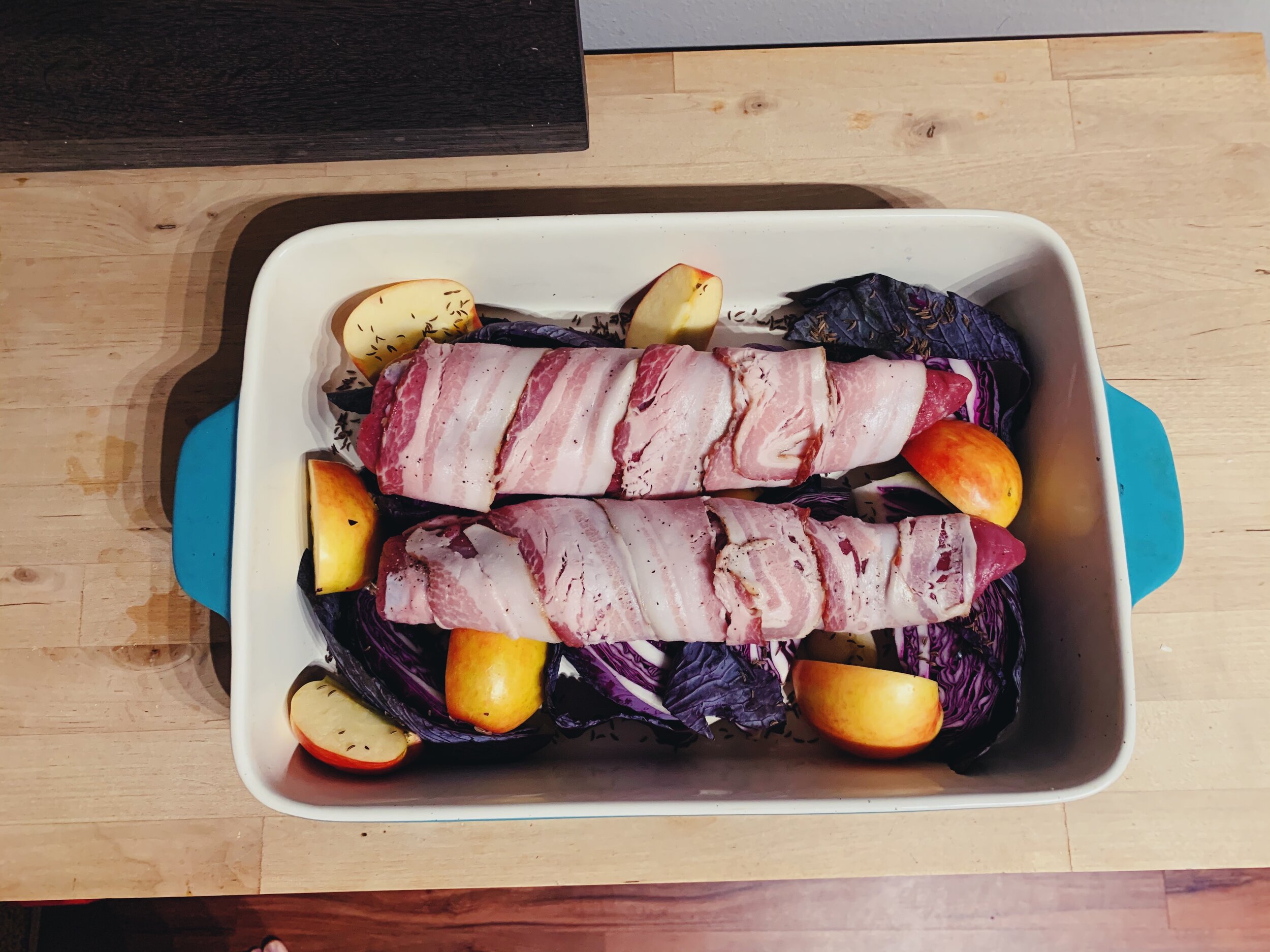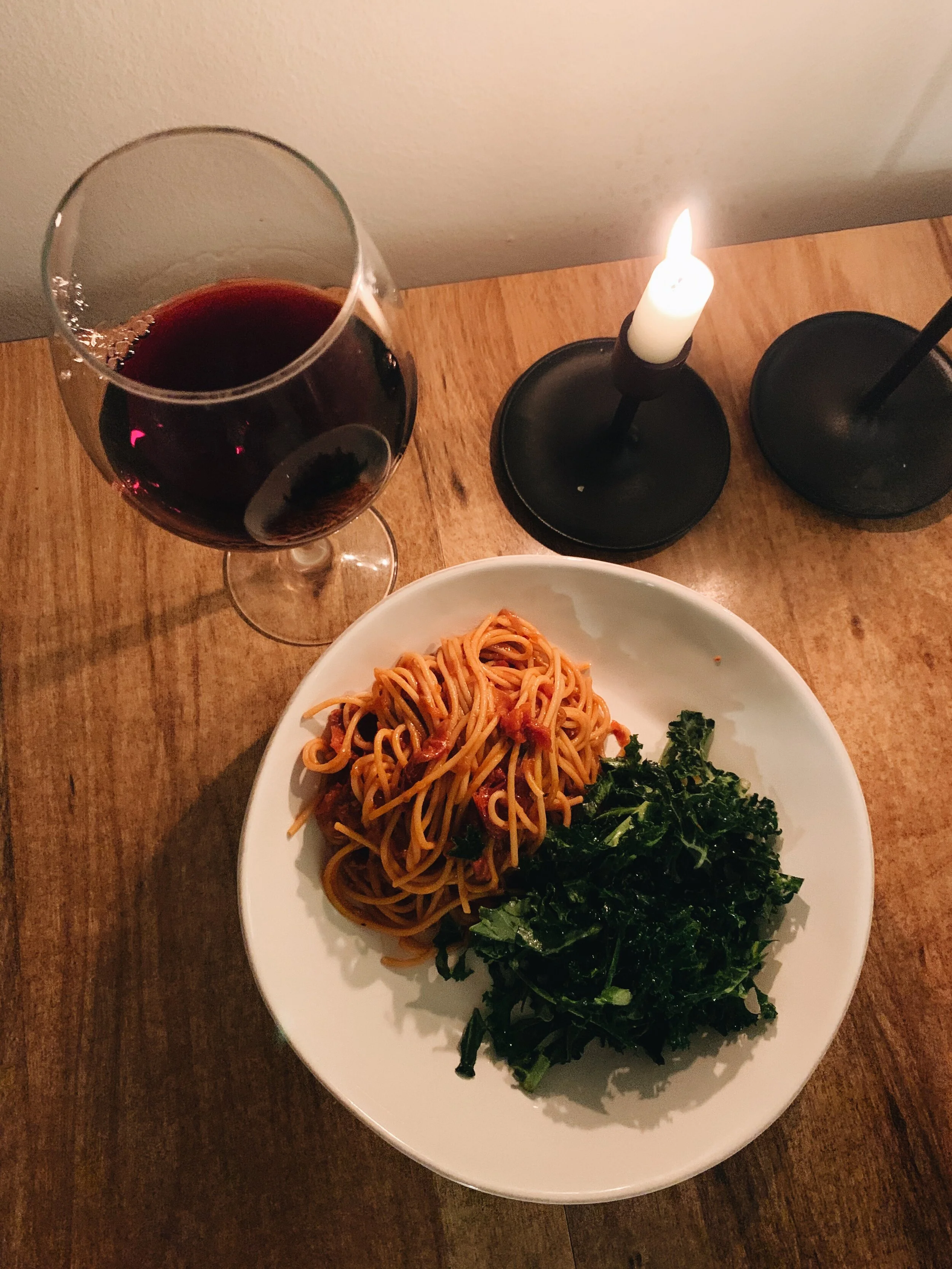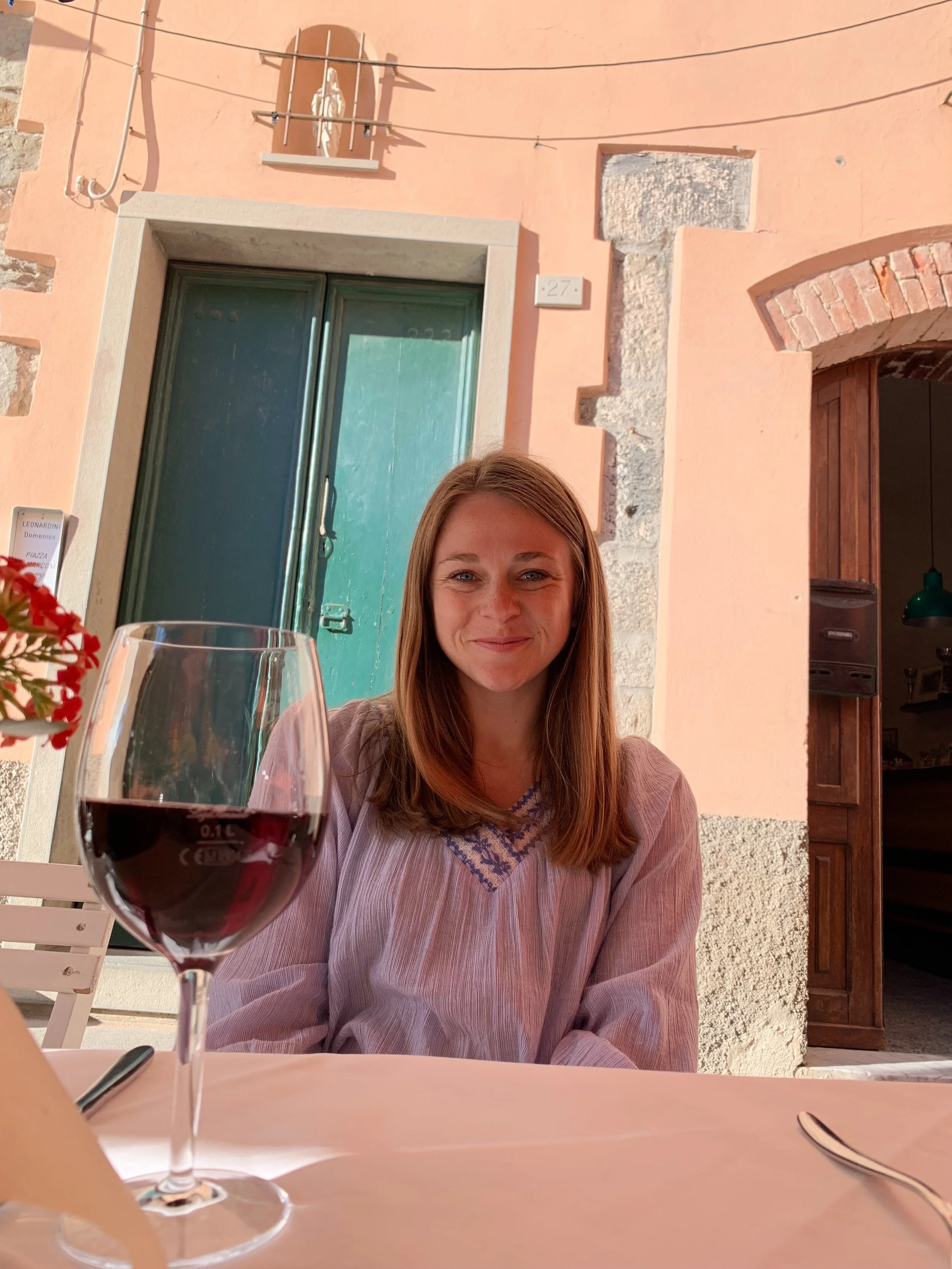Since starting this project, I tend to think about food in terms “Before Alison” or “After Alison.” Before Alison, seafood pasta wasn’t on my radar at all. After Alison, I crave it all the time. I look for it on restaurant menus. I approached this recipe with great anticipation. And it mostly lived up to my expectations.
This recipe requires a lot of multitasking, so the more you can prepare ahead of time, the less stressful the cooking process will be. I suggest slicing the garlic and fennel, and scrubbing and soaking the clams ahead of time. If you don’t already have toasted pistachios on hand, toast those first, too. The last thing you’ll want to do is wait for them to toast while your pasta is getting cold.
In a large skillet, I first sauteed the fennel bulb and garlic, letting them become tender. Then came the spices, toasted briefly, and a pound of tomatoes. No Sungold’s at the grocery store, but I did find Sungold look-alikes which did the job well. (Yes, even vegetables have doppelgangers!) The tomatoes needed time to heat through and break down into a jammy sauce. At around the eight-minute mark, I started gently breaking them down with the back of my wooden spoon. Next, I added white wine and let it simmer and reduce. That’s four different steps, and we’re only halfway through the recipe!
The clams need to steam in the sauce for a few minutes until they’re only slightly opened before the shrimp can join. The clams continue to open while their shrimpy partners cook and turn opaque. I’m always surprised at how little effort this seafood takes to cook!
Instead of adding the pasta to the skillet (I used TJ’s GF brown rice spaghetti), Alison recommends coating the noodles with sauce in a giant serving bowl instead. Heed her advice! I chose to dump the pasta into my saucy skillet, only to quickly realize that there was absolutely no room to toss everything together. I quickly poured the meal into a wide serving bowl and proceeded to mix it from there. The final step involves a good sprinkling of toasted, chopped pistachios for a nutty finish.
I really enjoyed this pasta. Jordan, not as much. He told me afterward that he could take or leave the seafood, and would enjoy the pasta with just the fennel and tomato sauce. I personally liked the added protein, but I see what he means. The seafood didn’t feel instrumental to the dish. More of an afterthought. If push came to shove, I think I’d prefer Alison’s other seafood pasta from Dining In, Clam Pasta with Chorizo and Walnuts. And that’s surprising, given my affinity for tomatoes.
131 recipes cooked, 94 to go.



